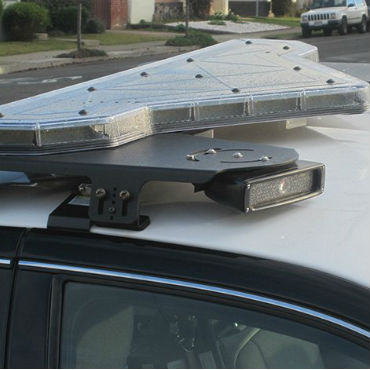CBP to share real-time license plate feed with DEA

The nation's drug enforcers will get access to a real-time feed of license plate reader data that includes info on every car and truck crossing a U.S. land border.

A mobile license-plate reader mounted on a law enforcement vehicle.
The nation's drug enforcers will get access to a real-time feed of license plate reader data that includes info on every car and truck crossing a U.S. land border.
Customs and Border Protection maintains automated license plate readers at ports of entry and Border Patrol checkpoints to collect data on vehicles entering and leaving the United States. In addition to collecting license plate and car data, they record physical location, time and date -- and may also capture images of vehicle occupants.
The Department of Homeland Security announced that data from CPB license plate readers will be shared in real-time with the Drug Enforcement Agency through a real-time streaming service. DEA users will be able to access raw data from license plate readers on vehicle traffic entering and exiting the U.S., and use the system to place alerts for individual license plates.
DHS announced the new interagency agreement in a privacy impact assessment published Dec. 11.
DEA currently has access to CBP data as a user of the TECS system that covers border activity under a 1997 agreement. The new arrangement increases the velocity of access for DEA, which previously had to make requests for license plate data via individual queries. CBP plans to update this arrangement to establish a web based system to let DEA access historic license plate information stored in TECS.
The U.S. Border Patrol, a component of CPB, deploys mobile and covert plate readers for "identifying travel patterns indicative of illegal border related activities," according to the DHS document. Mobile readers are stationed in Border Patrol vehicles and can interact in real time with agency computer systems, to send alerts when data on a plate on a "hot list" associated with an active investigation is captured.
Covert readers are concealed and typically set up to monitor busy intersections or interstate highways, according to the privacy impact assessment. These do not have the capacity to ping officers in real time – data from covert readers is transmitted to standalone servers and subject to individual query.
Under current law, the Border Patrol is permitted to operate covert and mobile readers within 100 miles of a border. However, under a reciprocal agreement, CBP officers with access to the agency's Automated Targeting System-Land can query DEA's license plate data web service. According to the privacy impact assessment, CBP can only use DEA data in furtherance of its own mission and investigations. The assessment also notes that queries of DEA data will be logged.
The document states that the DEA is required to certify to CBP every six months that it is "appropriately filtering the streaming flow of CBP [license plate reader] data" and only retaining data that matches information in a DEA alert.
NEXT STORY: Kaspersky Strikes Back After U.S. Government Ban



